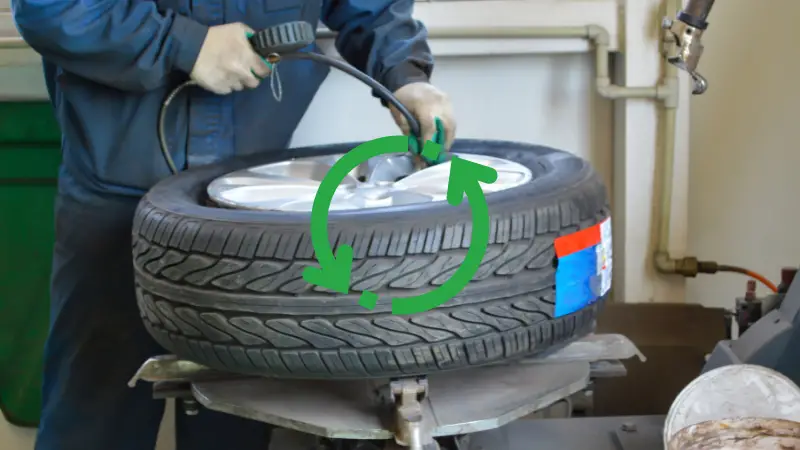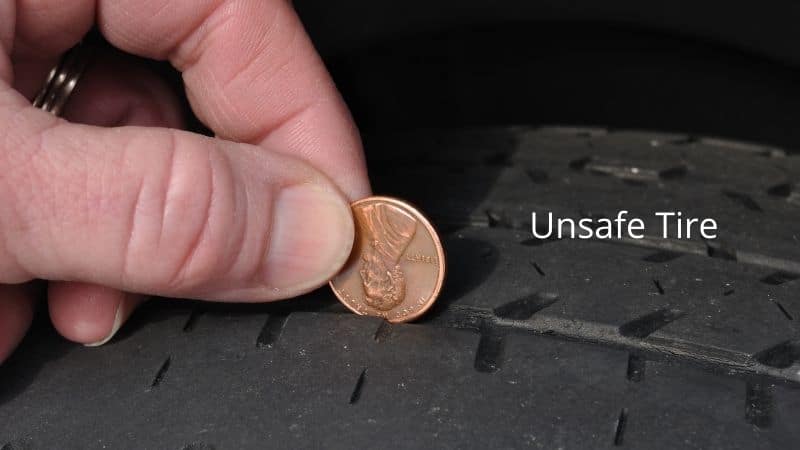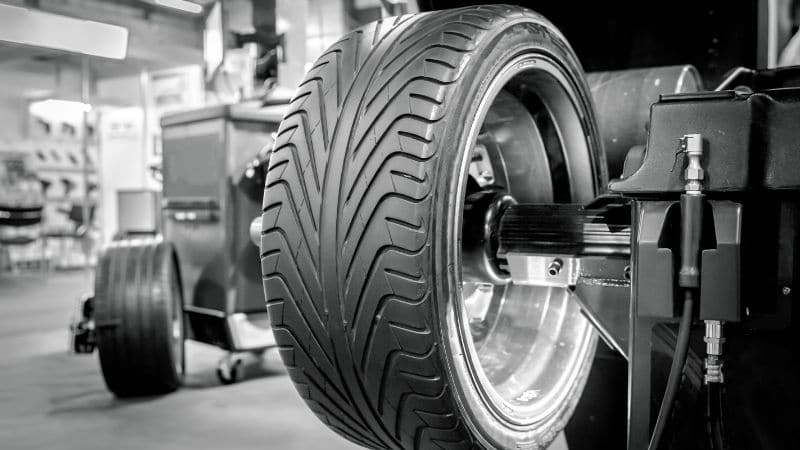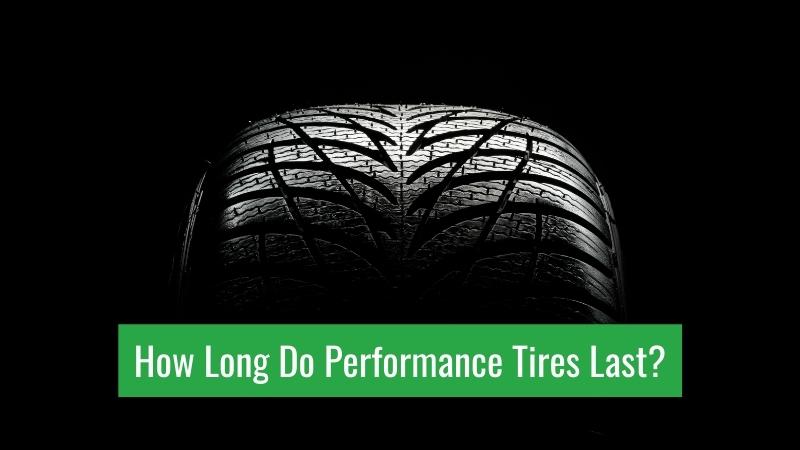When it comes to performance tires, you might be wondering how long they’ll last and when it’s time to replace them.
The lifespan of performance tires can vary depending on several factors, including driving habits, road conditions, and maintenance.
On average, most performance tires have a lifespan of 6 to 10 years. Manufacturers typically recommend replacing them after 10 years even if the tread appears to be in good condition, as the rubber compounds used in the manufacturing process can deteriorate and weaken over time.
To ensure optimal safety and performance, it’s crucial to regularly check your tires and know when it’s time for a replacement.
To evaluate the condition of your tires, pay attention to factors such as tread depth, tire age, and visual signs of damage. Conduct regular inspections and take action if you notice any warning signs.
By staying proactive, you can maintain peak performance, safety, and longevity for your performance tires.
What Are Performance Tires
Performance tires are specifically designed to provide your vehicle with enhanced handling, grip, and performance. These tires are often used on sports cars and high-powered vehicles, as they enable you to achieve better stability and control at high speeds.
They are made from softer rubber compounds, allowing them to flex and stick to the road surface more effectively compared to standard all-season tires.
The tread design of performance tires is also unique, featuring large tread blocks and more aggressive patterns to provide the necessary traction on dry and wet pavement.
These tires also might have a lower aspect ratio, which means the sidewall is shorter, resulting in stiffer and more responsive handling. However, one trade-off for their excellent performance capabilities is a shorter lifespan when compared to regular tires.
There are different types of performance tires, including:
- Ultra High-Performance (UHP) Tires: Designed for maximum grip and handling in both wet and dry conditions. They’re typically intended for sports cars and high-performance sedans.
- Max Performance Summer Tires: Optimized for extreme performance in warm, dry conditions. They have limited wet weather capabilities and should not be used in winter.
- Extreme Performance Tires: Offer the highest level of dry grip and handling, but they may sacrifice ride comfort and treadwear in favor of performance. These tires are more track-focused and not ideal for daily driving.
When selecting performance tires for your vehicle, it is essential to choose the right type based on your driving habits and the specific needs of your car to get the best performance and handling possible.
How Long Do Performance Tires Last

Performance tires typically last for an average of 40,000 miles (64,000 kilometers). However, the actual lifespan of these tires varies depending on the type of performance tire you have on your vehicle.
Ultra-High-Performance All-Season tires tend to last around 49,000 miles, while UHP All-Summer Tires have a shorter lifespan, ranging between 15,000 – 30,000 miles.
Do Performance Tires Wear Faster Than Other Tires?
Yes, performance tires tend to wear more quickly compared to other tires designed for regular use. This is mainly due to their softer rubber compounds, which provide better grip and handling but also wear down faster.
In contrast, family-car tires can readily last 70,000 miles or more based on Consumer Reports’ treadwear testing.
Aside from the type of tire, factors that can affect wear rates include your driving style, road conditions, and tire maintenance. To maximize the life of your performance tires, consider the following tips:
- Regularly check and maintain proper tire pressure
- Rotate your tires periodically to ensure even wear
- Perform wheel alignments as needed to help distribute tire wear evenly
- Avoid aggressive driving, such as hard acceleration, fast cornering, and abrupt braking
It’s essential to monitor your performance tires regularly and know when it’s time to replace them. In the next section, we will discuss how to check if it’s time to replace your performance tires.
Longest Lasting Performance Tires on The Market
I did some research to find the longest lasting performance tires on the market, and I found that these five has been top ranked for many years:
- Michelin Pilot Sport A/S 3+
- Continental ExtremeContact DWS06
- Pirelli P Zero All Season Plus
- Goodyear Eagle Exhilarate
- Bridgestone Potenza RE980AS
Remember that tire longevity can be influenced by various factors, including driving habits, road conditions, and proper maintenance. Ensure that you regularly check tire pressure, rotate tires, and align wheels to maximize tire life.
Factors Affecting Performance Tires Lifespan
In this section, we will discuss the main factors that affect the lifespan of your performance tires:
Driving Style
Your driving style plays a significant role in the lifespan of your tires. Aggressive cornering, rapid acceleration, and hard braking can cause increased wear on your tires, reducing their longevity. By adopting a smoother driving style, you can help extend the life of your tires.
Road Conditions
The conditions of the roads you frequently drive on can also impact your tire’s lifespan. Potholes, sharp objects, and debris can cause damage or uneven wear on your tires.
To maximize the life of your performance tires, try to avoid driving on poor road conditions or regularly inspect your tires for any damage after driving on such surfaces.
Proper Maintenance
Regular maintenance is essential in extending the life of your tires. This includes maintaining proper tire inflation, rotating your tires, and ensuring your vehicle’s alignment is correct.
Neglecting these maintenance tasks can lead to uneven wear and ultimately reduce the lifespan of your tires. Refer to your vehicle’s owner’s manual for the recommended maintenance schedule.
Tire Materials and Construction
The materials and construction of your performance tires can also affect their lifespan. High-performance tires typically use softer rubber compounds to provide better grip and handling at high speeds, but this can result in faster wear.
Performance tires with harder rubber compounds may last longer but might not provide the same level of grip or handling. It’s essential to find a balance between performance and longevity when choosing your performance tires.
Keep in mind that performance tires can last for 40,000 miles (64,000 kilometers) on average, with high-performance tires lasting around 20,000 miles (32,000 kilometers).
Signs That It’s Time to Replace Your Performance Tires
Performance tires provide excellent grip, handling, and responsiveness, but they have a limited lifespan. In this section, you will learn about the signs that it’s time to replace your performance tires, as well as how to check for their condition.
Tread Depth
Tread depth is a critical factor in determining whether your tires are still safe and effective. The tread on your tires provides necessary traction, so worn-out treads can lead to a decrease in performance and increase the risk of an accident.
A simple way to check the tread depth on your tires is by using the penny test. Place a penny in the tread of your tire with Lincoln’s head pointing down into the tread. If the top of Lincoln’s head disappears, your tread is still above 2/32″ and is safe to use. If not, it’s time to consider replacing your tires.

Tire Age
Even if your tire tread depth is sufficient, the age of your tires can also affect their performance. The National Highway Traffic Safety Administration (NHTSA) recommends replacing tires that are six years old, while some manufacturers and automakers suggest a maximum of ten years.
You can find the age of your tires by checking the Department of Transportation’s Tire Identification Number (TIN) on the sidewall of the tire. The last four digits of the TIN indicate the week and year of manufacture.
Visual Inspection
A visual inspection of your tires can also provide insight into their condition. Look for signs of wear and damage, such as:
- Uneven wear patterns
- Cracks or cuts in the sidewall
- Bulges or bubbles on the tire surface
- Foreign objects embedded in the tread
If you notice any of these issues during your visual inspection, it’s a good indication that it’s time to replace your performance tires. Regularly checking and maintaining your tires will ensure optimal performance and safety on the road.
How to Extend the Life of Your Performance Tires
Performance tires are known to sacrifice lifespan for improved handling. However, you can still extend their life by following proper maintenance guidelines.
In this section, we will discuss a few essential practices that will help you make the most of your performance tires.
Regular Tire Rotations
Rotating your tires regularly is crucial to ensure even wear, which can prolong their lifespan. Typically, tire rotations should be performed every 5,000 to 7,000 miles, as per your owner’s manual or tire warranty guidelines. This practice helps balance tire wear and maintains optimal handling and traction.
Proper Tire Inflation
Maintaining the correct tire pressure is essential for enhancing tire life. Incorrect tire pressure can lead to poor handling, uneven wear, and a higher risk of blowouts.
To avoid these issues, check the air pressure in your tires at least once a month. You can find the recommended tire pressure for your vehicle in the owner’s manual or on the tire information placard, which is usually located on the driver’s door jamb.
Wheel Alignment
Proper wheel alignment ensures that your tires wear evenly and provide optimal handling. Poor alignment can cause uneven tire wear, reduced fuel efficiency, and impaired handling.
It is advisable to have your vehicle’s alignment checked and adjusted every two years or when you notice abnormal tire wear patterns or handling issues. You can read more about wheel alignment here.
Balancing

Balancing helps distribute the weight of your tires evenly around the wheel, allowing for a smoother ride and preventing uneven tire wear. Typically, tires should be balanced every time they are rotated, or when you experience vibrations or unexplained steering issues.
Balancing contributes not only to extending the lifespan of your tires but also to enhancing safety and performance. You can read more about wheel balancing here.
Conclusion
In summary, performance tires typically last around 40,000 miles (64,000 kilometers) on average, while high-performance tires may only last for about 20,000 miles (32,000 kilometers). Remember to have your tires inspected after 6 years and avoid using them for more than 10 years.
To determine if it’s time to replace your performance tires, you should pay attention to the tread depth, age, and visual signs of wear or damage.
A simple and effective way to check the tread depth is by using the penny or quarter test. Insert a penny or quarter into the grooves of the tire with the head facing down. If the top of the coin head is visible, it’s time to start shopping for new tires.
Moreover, always keep an eye on the tires’ age, as most experts recommend inspecting or replacing them after 6 years from their manufacturing date. You can find the manufacturing date of your tires in the last four digits of the Tire Identification Number located on the sidewall of the tire.
Regularly inspect your tires for visual signs of wear and damage, such as bulges, cracks, or uneven wear patterns. Identifying these issues early can help you replace your tires before they become unsafe to use.
By following these guidelines and taking proper care of your performance tires, you can ensure your safety on the road and extend the lifespan of your tires.
Hi, my name is Niklas, the head content creator & CEO of Whirling Wheelz. I am very interested in vehicles of all kinds, mainly cars. I have a car mechanics degree from high school and a big hobby of mine is to follow the WRC (World Rally Championship) both online and through travel.

